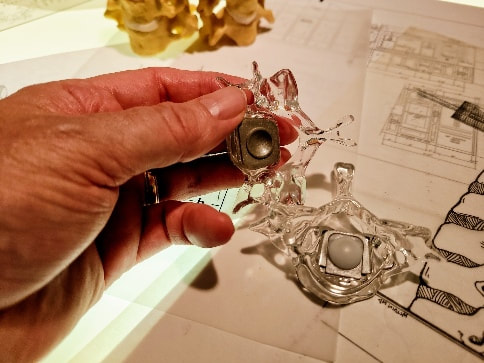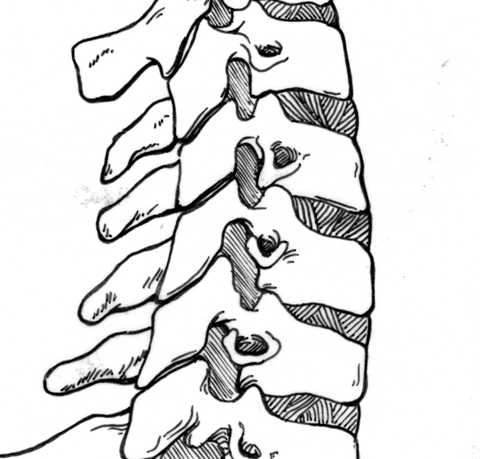What's a "Clinical Trial" and Why Should I Consider Participating? Part 2
So, why would you consider participating in a Clinical Trial?
In many cases, the reason a new product has been introduced is that flaws have been recognized in the existing "state of the art". Over years of use, in large numbers of patients, even the best devices and treatment strategies prove to have weaknesses or inadequacies.
Newer technologies or materials can sometimes eliminate these weaknesses without much change in the base design, but may still require an extensive study before being "approved" by the FDA for distribution. The willingness to accept the theoretical risk of a well studied newer technique in order to avoid the known risks of an existing treatment is one reason a patient may at least consider their options.
In other cases, advances in engineering or material science make the reliability of the newer implant considerably better than the existing product, which may have been designed decades ago and remain essentially unchanged for many years. Newer technologies, such as 3-D printing, have so changed the ability to fabricate a metal implant that the whole design and technique for implant placement may change, and may require renewed trials.
In other cases, advances in engineering or material science make the reliability of the newer implant considerably better than the existing product, which may have been designed decades ago and remain essentially unchanged for many years. Newer technologies, such as 3-D printing, have so changed the ability to fabricate a metal implant that the whole design and technique for implant placement may change, and may require renewed trials.
And, naturally, after any implant or technique has been in use for several years, surgeons and designers recognize ways to improve it and to eliminate problems that may have emerged after thousands of cases or many years. Simply changing the surface texture or the base material of an original design may require resubmission, and real changes in structure or geometry almost always will. Again, wanting the upgraded design rather than the old standard is important to many patients.
Why are these studies even necessary?
Recent failures of some very promising hip replacement implants drove the FDA to increase their demands on manufacturers. Companies developing and producing Orthopaedic implants, here or overseas, now have to show the FDA that a new implant is backed up by valid scientific evidence showing that it is safe and effective for its intended use. The FDA also requires implant companies to get the agency’s approval before making any changes to the implant, its labels, or even what metals are used and how it’s manufactured. Manufacturers have to report the ongoing safety results of these implants to the FDA every year.
Prior to these current requirements, for instance, metal-on-metal total hip replacement implants were cleared through a different process. Manufacturers did not have to prove their new design was safe and effective, merely show that it was “substantially similar” to a proven device already on the market.
However, manufacturers stopped making and distributing the metal-on-metal hip implant products and issued extensive recalls after thousands of patients developed a complication called metallosis, a reaction to metal particles rarely seen after Orthopaedic procedures prior to the use of metal on metal hip joints. Because metallosis didn't become apparent until years after the implants were put in, that meant that thousands of patients suffered injuries and required revision surgery to replace the hips.
As of March 2019, there are no metal-on-metal hip replacements approved for use in the United States.
What does a patient have to do if they agree to participate in a Clinical Trial?
They have to fit the INCLUSION CRITERIA - they have to be of the right age, with the right kind of problem, and the right symptoms to qualify for the procedure being studied. For the ongoing SMART spinal implant study, that means having a relatively specific kind of problem in the right part of the spine - a one or two level disc herniation or degeneration in the cervical spine, for instance.
Why are these studies even necessary?
Recent failures of some very promising hip replacement implants drove the FDA to increase their demands on manufacturers. Companies developing and producing Orthopaedic implants, here or overseas, now have to show the FDA that a new implant is backed up by valid scientific evidence showing that it is safe and effective for its intended use. The FDA also requires implant companies to get the agency’s approval before making any changes to the implant, its labels, or even what metals are used and how it’s manufactured. Manufacturers have to report the ongoing safety results of these implants to the FDA every year.
Prior to these current requirements, for instance, metal-on-metal total hip replacement implants were cleared through a different process. Manufacturers did not have to prove their new design was safe and effective, merely show that it was “substantially similar” to a proven device already on the market.
However, manufacturers stopped making and distributing the metal-on-metal hip implant products and issued extensive recalls after thousands of patients developed a complication called metallosis, a reaction to metal particles rarely seen after Orthopaedic procedures prior to the use of metal on metal hip joints. Because metallosis didn't become apparent until years after the implants were put in, that meant that thousands of patients suffered injuries and required revision surgery to replace the hips.
As of March 2019, there are no metal-on-metal hip replacements approved for use in the United States.
What does a patient have to do if they agree to participate in a Clinical Trial?
They have to fit the INCLUSION CRITERIA - they have to be of the right age, with the right kind of problem, and the right symptoms to qualify for the procedure being studied. For the ongoing SMART spinal implant study, that means having a relatively specific kind of problem in the right part of the spine - a one or two level disc herniation or degeneration in the cervical spine, for instance.
They can't fit any of the EXCLUSION CRITERIA - complicating medical problems such as poor bone quality, infections or tumors, heart or lung disease, for instance, have had previous surgery, be pregnant or plan on becoming pregnant (sometimes) during the course of the treatment, or be of the "wrong" age or gender, if age or gender are a critical issue in the study. Patients may be excluded from the study if they have too much disease - degeneration at many levels of the spine, or such bad arthritis that the spine has become rigid or deformed, for instance, but should never be excluded because of their ethnicity, background, or social circumstances.
They must WANT TO participate - no study like this is ever intended to coerce a patient into participation! No matter what the circumstance, patients can choose to participate, or to leave the study anytime they wish. On the other hand, any time a patient stops participating, they are counted as a failure for their treatment group, so it's important that the study only enrolls patients that really understand their obligations and really want to participate.
They must be able to FOLLOW-UP at the appropriate times after the study so that their results can be accurately assessed and recorded. That means patients that have to travel long distances for visits, or who are planning to move out of the area after surgery, or have other issues that make their regular return unlikely, aren't good candidates for inclusion in most studies. Many studies do provide compensation for time and travel to help patients make it to their important follow-up visits.
They must be comfortable with the decision process that will determine which treatment they will receive. In studies of Orthopaedic and spinal implants, the comparison of two different implants often involves a RANDOMIZATION process which determines that the group of patients getting Implant A is as similar to those receiving Implant B as possible. Randomization is usually carried out by someone other than the surgeon or study team, so that there is as little bias in the process as possible. This process is often "blinded" such that the patient won't know until later in the study which implant they received, and sometimes from the study team until the day of surgery. This insures that every patient gets the same care and attention though-out their care, no matter which group they are in.
For more information about patient participation in FDA approved Clinical Trials go to: Clinical Center NIH
They must WANT TO participate - no study like this is ever intended to coerce a patient into participation! No matter what the circumstance, patients can choose to participate, or to leave the study anytime they wish. On the other hand, any time a patient stops participating, they are counted as a failure for their treatment group, so it's important that the study only enrolls patients that really understand their obligations and really want to participate.
They must be able to FOLLOW-UP at the appropriate times after the study so that their results can be accurately assessed and recorded. That means patients that have to travel long distances for visits, or who are planning to move out of the area after surgery, or have other issues that make their regular return unlikely, aren't good candidates for inclusion in most studies. Many studies do provide compensation for time and travel to help patients make it to their important follow-up visits.
They must be comfortable with the decision process that will determine which treatment they will receive. In studies of Orthopaedic and spinal implants, the comparison of two different implants often involves a RANDOMIZATION process which determines that the group of patients getting Implant A is as similar to those receiving Implant B as possible. Randomization is usually carried out by someone other than the surgeon or study team, so that there is as little bias in the process as possible. This process is often "blinded" such that the patient won't know until later in the study which implant they received, and sometimes from the study team until the day of surgery. This insures that every patient gets the same care and attention though-out their care, no matter which group they are in.
For more information about patient participation in FDA approved Clinical Trials go to: Clinical Center NIH


